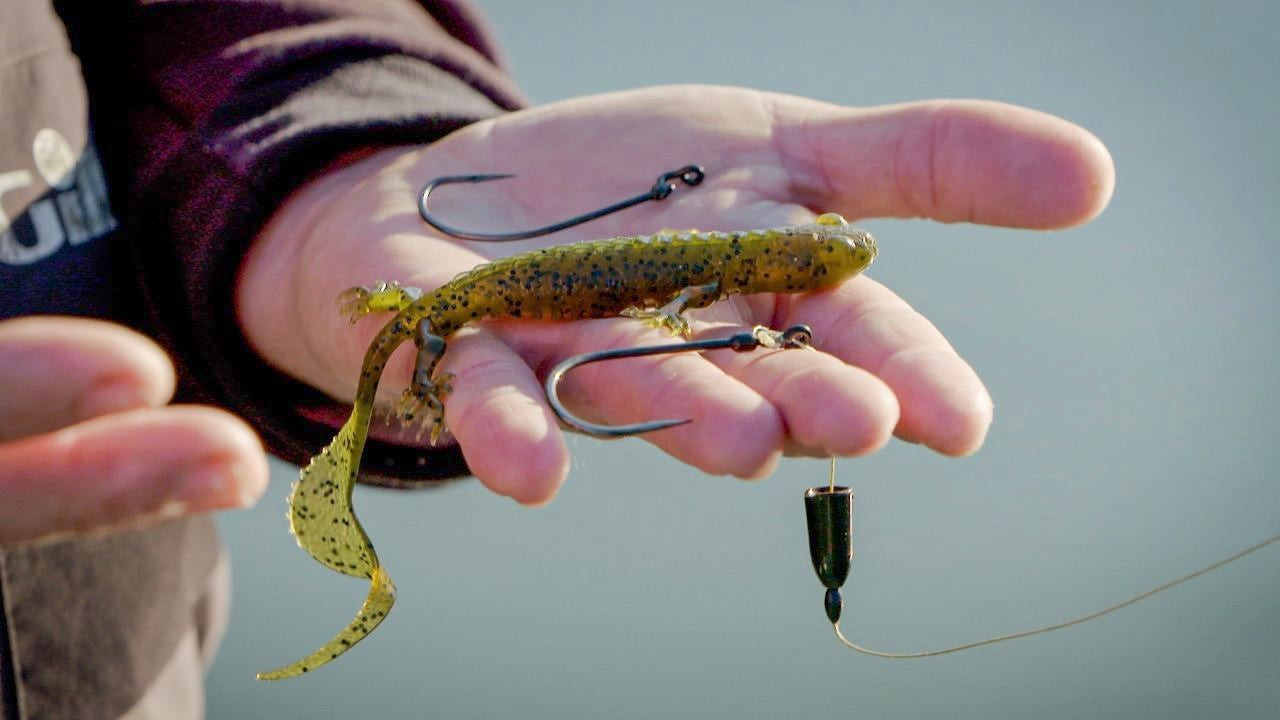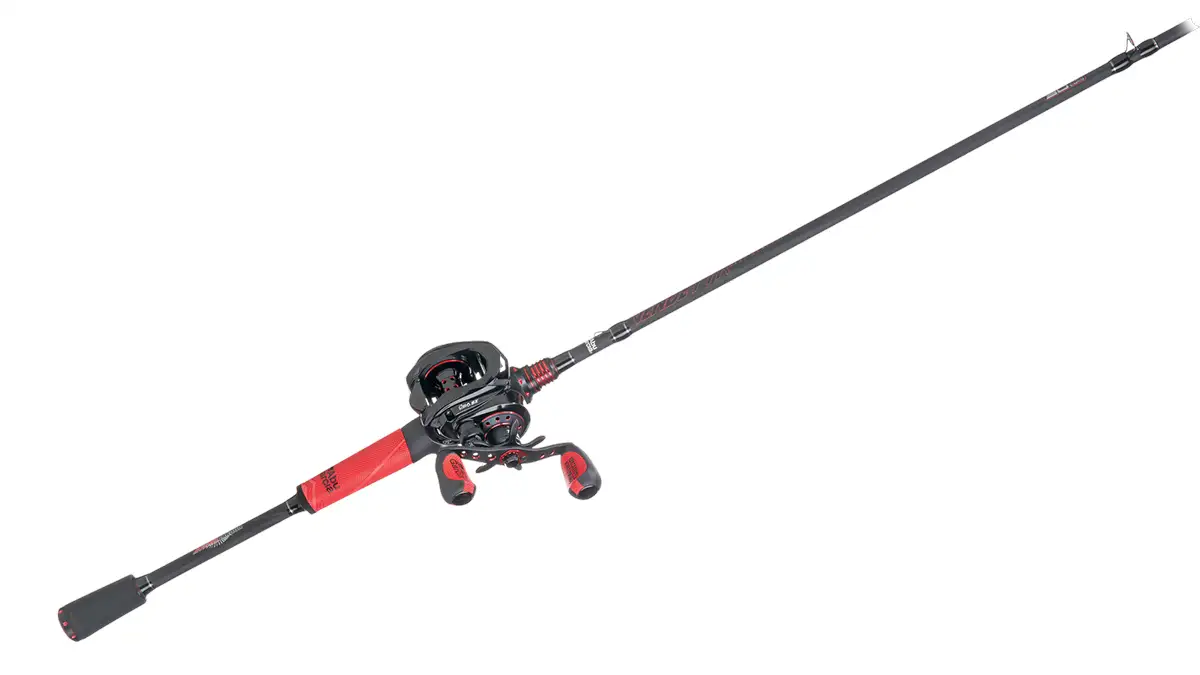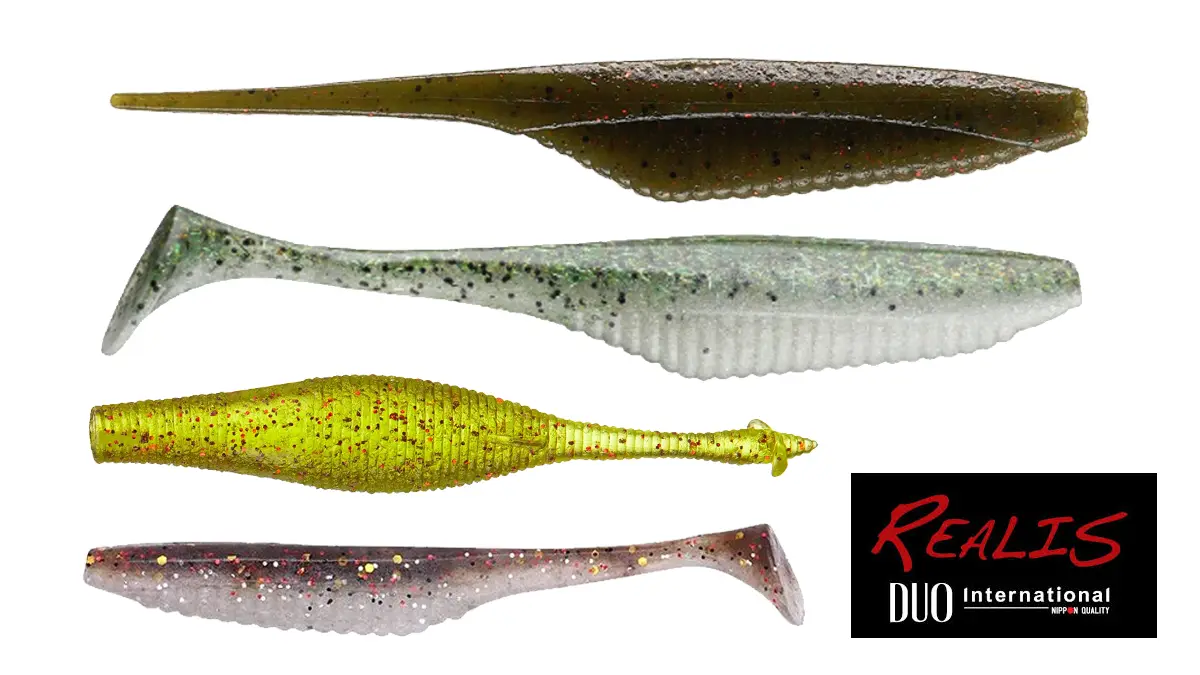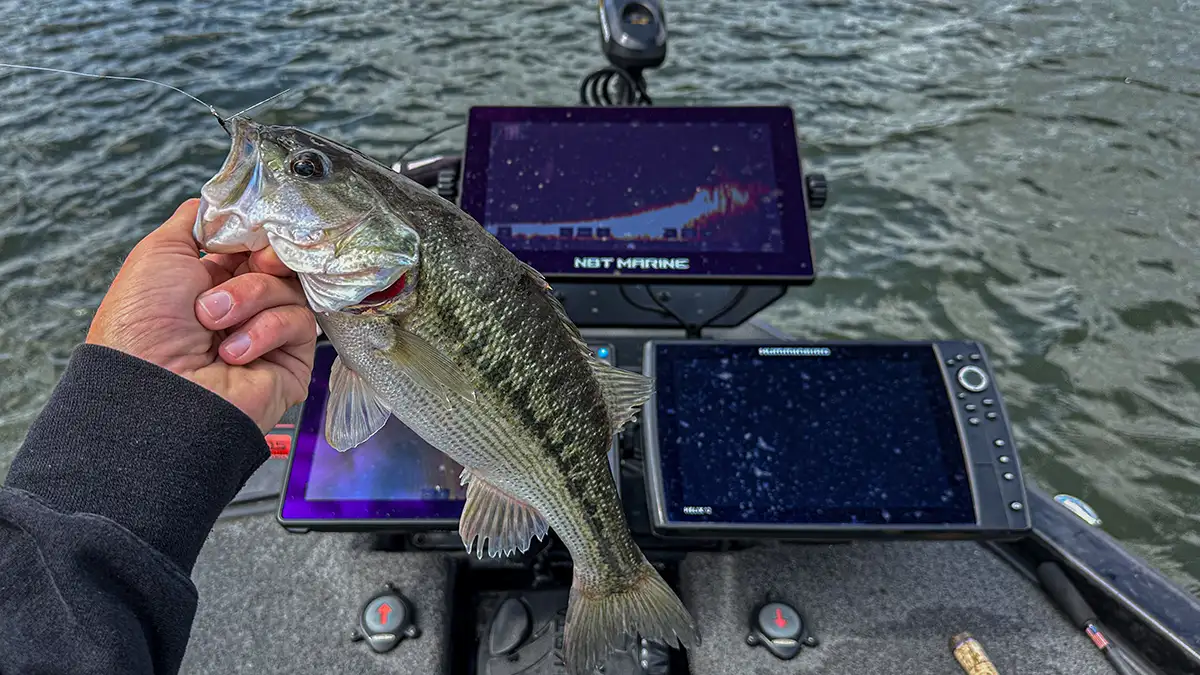It is often thought that cold fronts ruin bass fishing, but if you know where to look and understand some basic bass biology, you can be successful when the temperature drops and the barometer rises.
Cliff Pace says there are two keys to catching bass during a cold front:
- Speed
- Location
FISHING GEAR:
- Savage Gear 3D Lizard
- Mustad Hook Denny Brauer Grip-Pin Max Flippin Hook
- Mustad Hook Grip-Pin Soft Plastic Hook
- Mustad TitanX Tungsten Worm Weight, 3/8oz
- TFO Tactical Elite 7’6″ Xtra Hvy Flipping Rod
- HI-SEAS Grand Slam Braid – Green 65lb
Cliff Pace says the key to catching fish in the cold front is to slow down and look for areas that will hold the most heat. One tactic that fits this bill perfectly is flippin’. Bass suck tight to heavy cover for comfort and warmth during these cold conditions and it’s easy to see why. Fish are cold-blooded creatures and are directly affected by the environment around them so as the temp drops, their desire to expend energy and feed drops with it.
When this happens fish are more apt to eat baits they don’t have to work for. Cliff will often choose a lizard for this as it adds bulk and can be fished slowly. The thickness of the cover determines the size of the weight needed to penetrate to get to the fish but in general, you want to fish the lightest weight you can get away with so the bait doesn’t go flying past them on the fall. Pace preaches the speed at which you fish to be the single most important thing. You need to focus on small areas that you can fish as thoroughly as possible.
Cliff focuses on the northern shores of lakes as they are sheltered from the cold north winds of winter. They also receive to most sunlight on a given day which makes them the warmest parts of the lake. Since this water can be limited, pace again chooses to fish these areas slowly and methodically. As the pre-spawn, spawn progresses, Big female bass seek out these areas to maintain energy to spawn and to help incubate the eggs. Which is just another reason to fish these high percentage areas.












